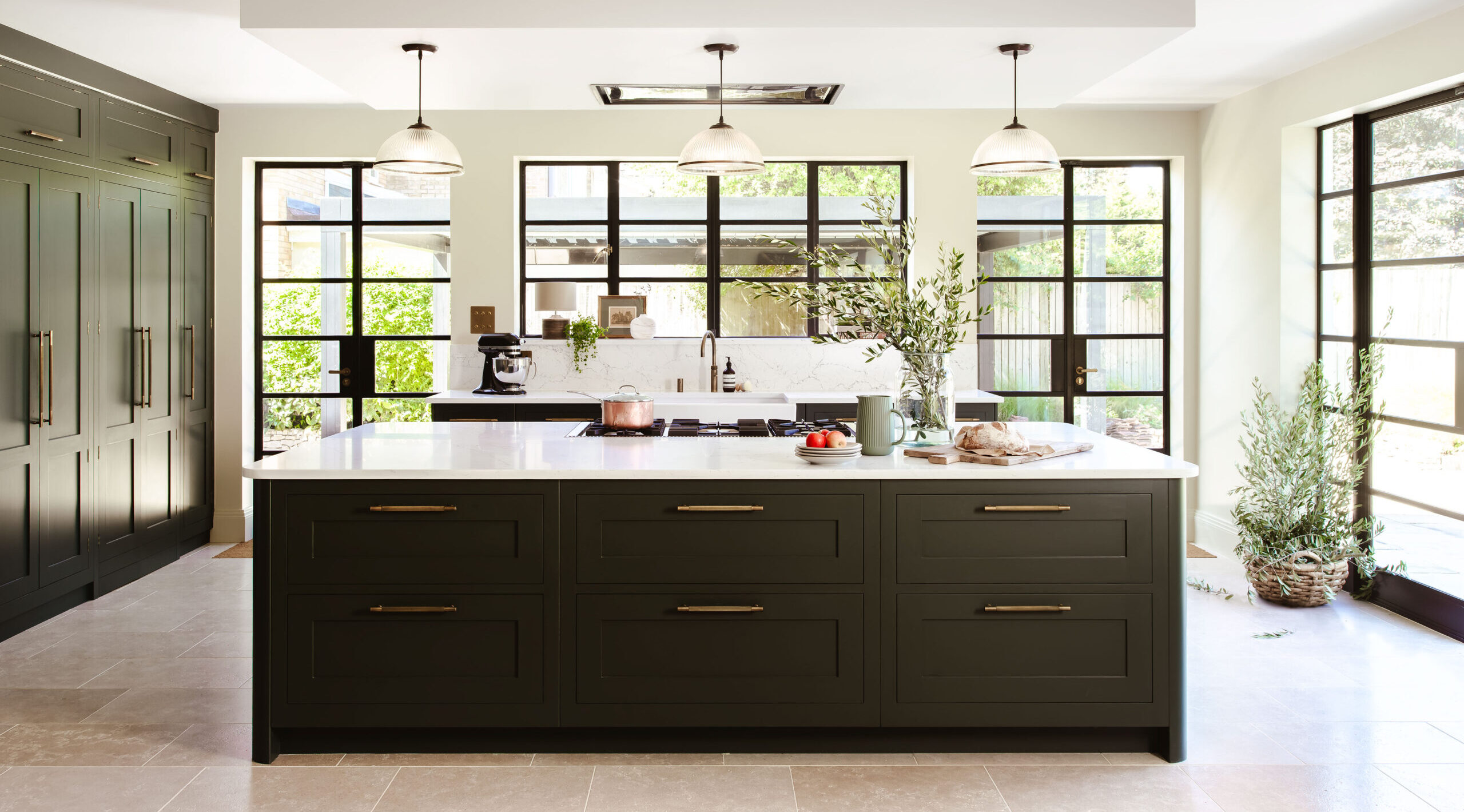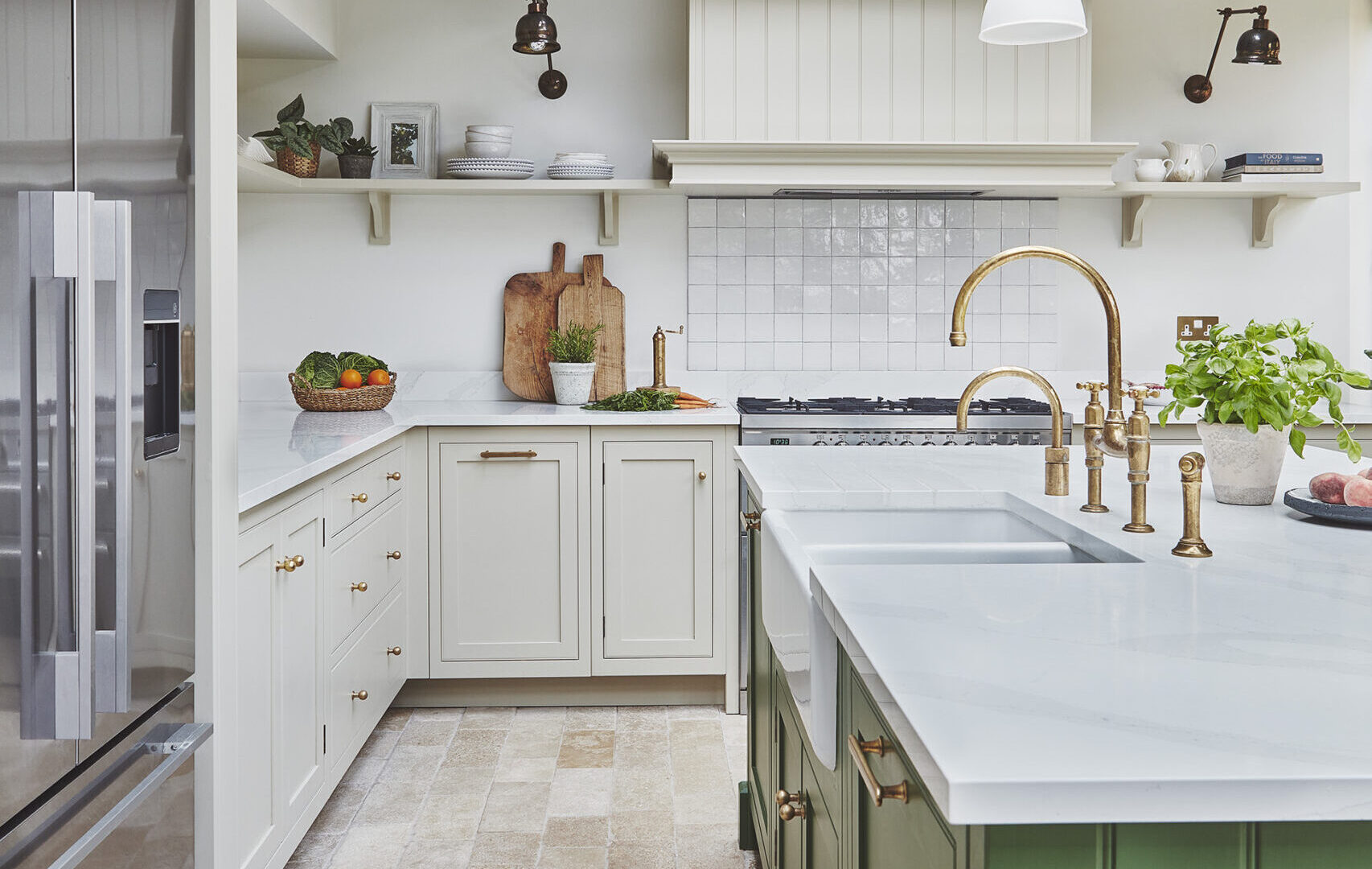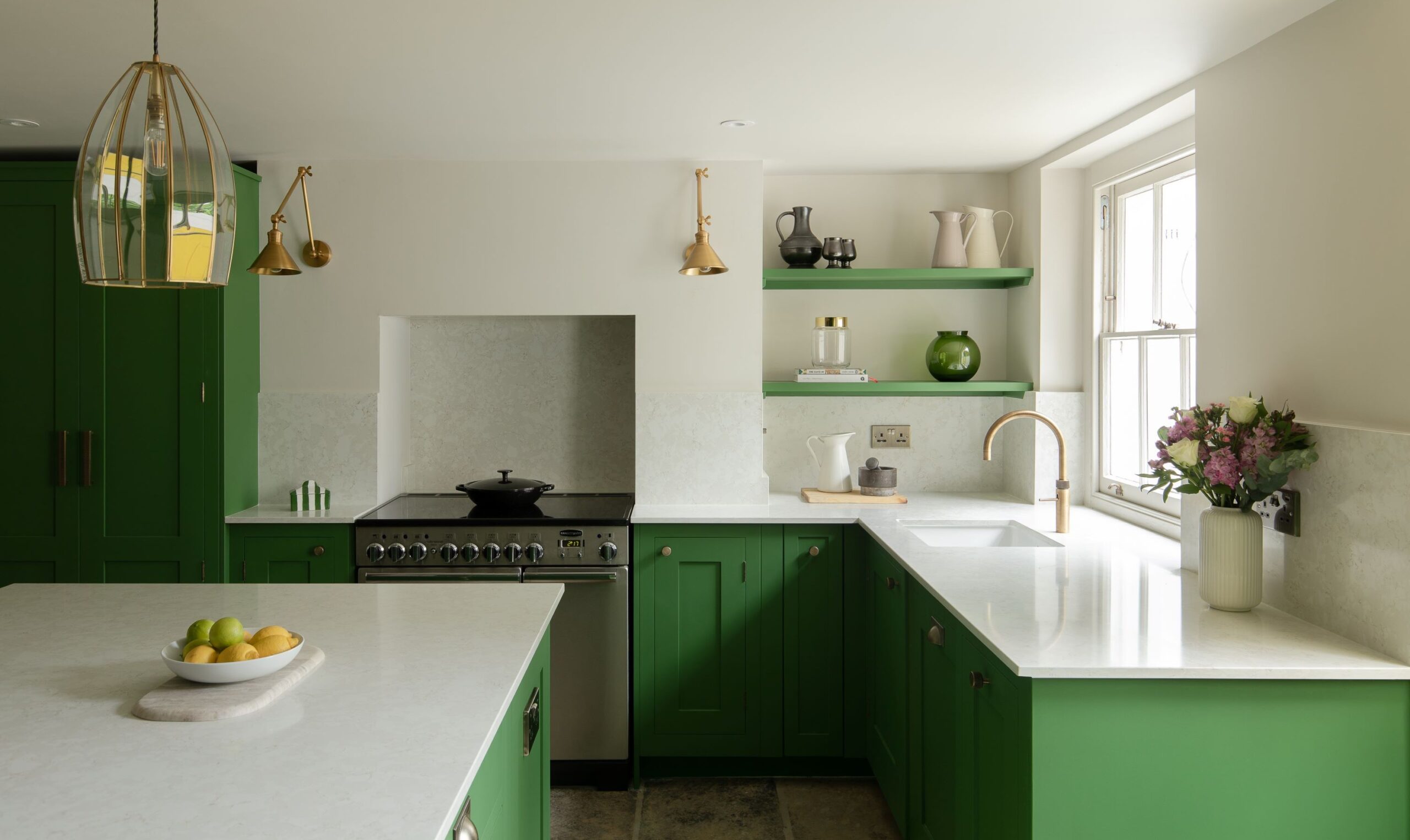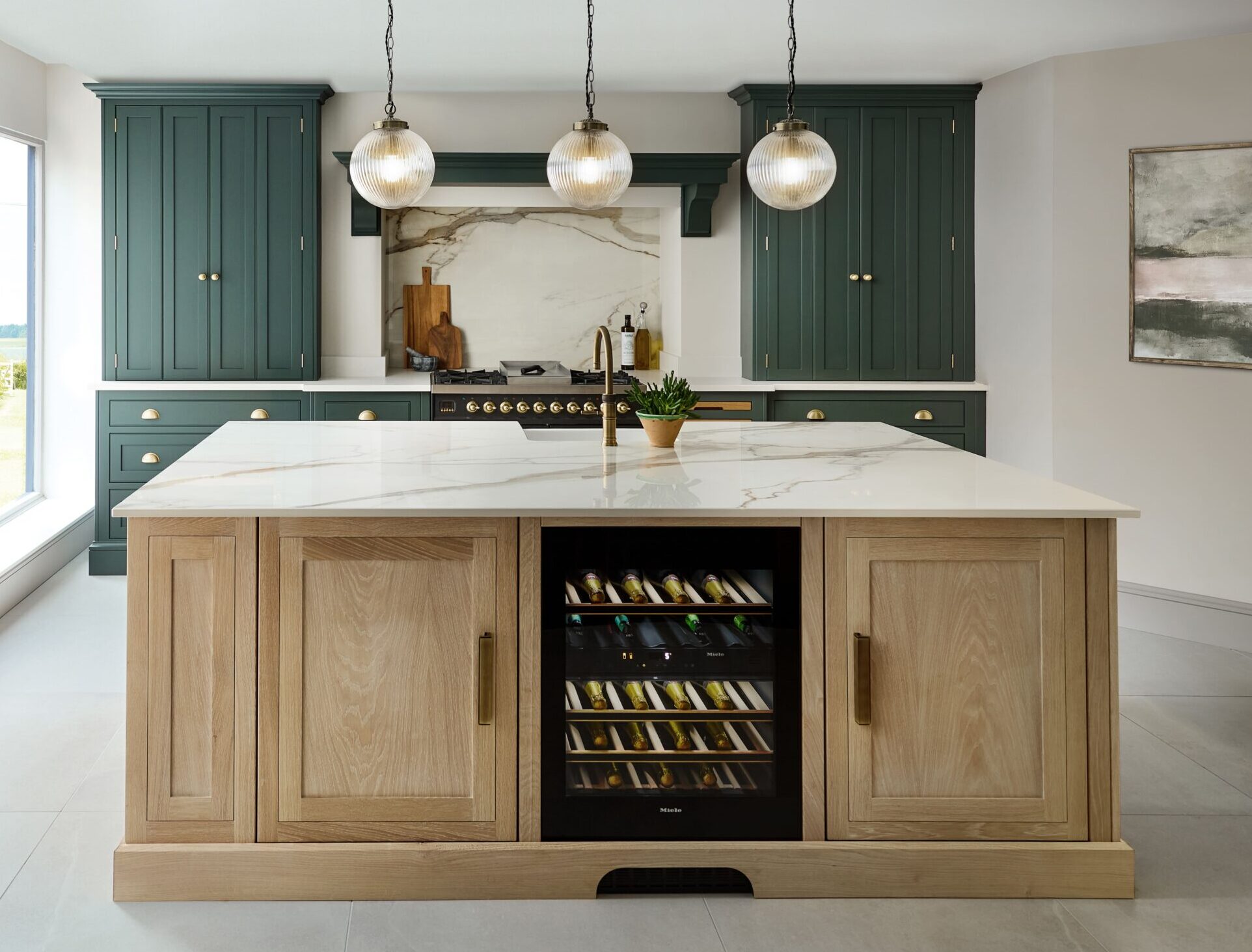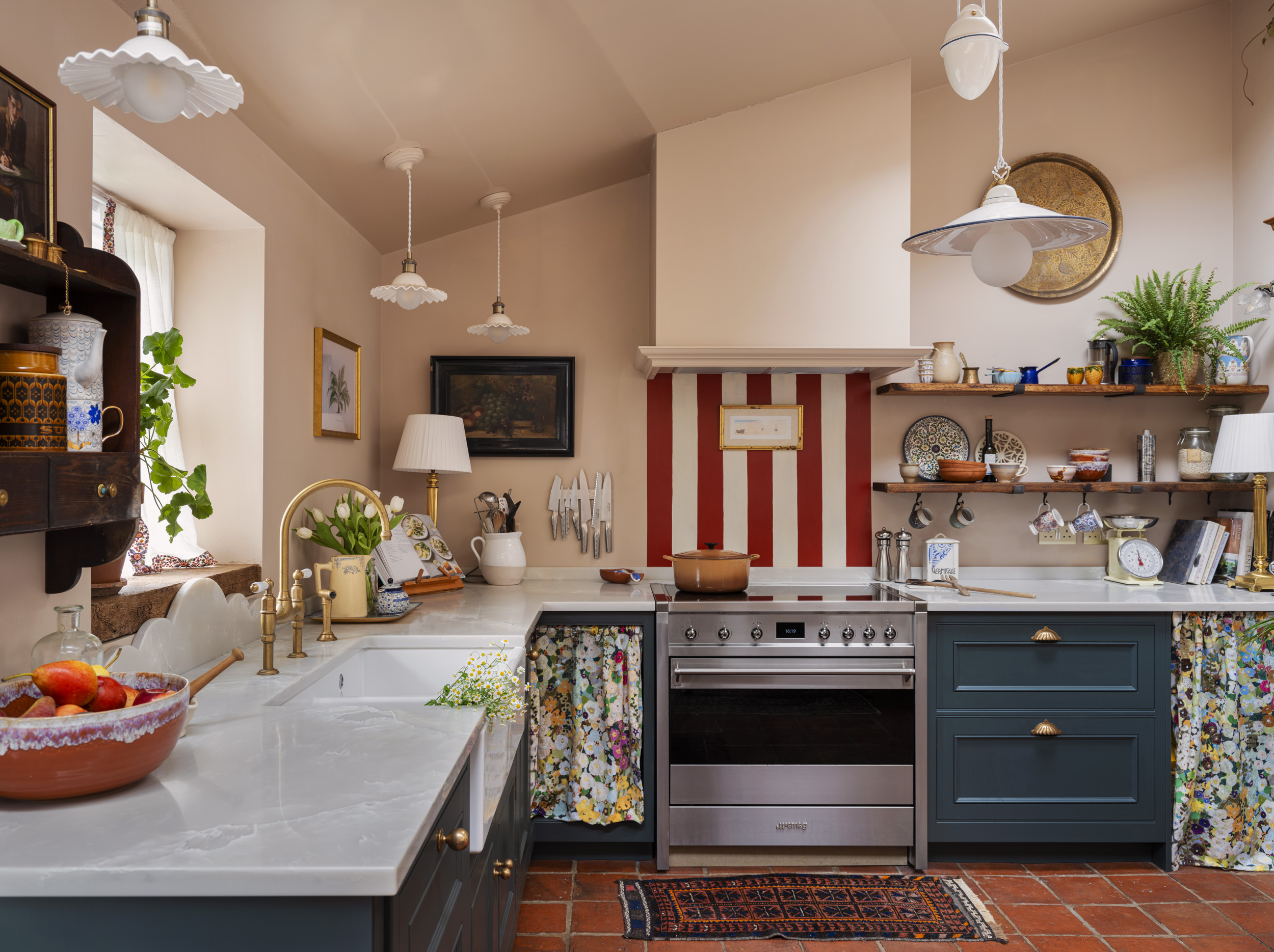
An organised kitchen isn’t just visually pleasing—it can save you time, reduce daily stress, and make meal preparation more enjoyable. At Harvey Jones, we understand that well-thought-out storage solutions are the foundation of a functional kitchen. That’s why Stacey Cobley, our senior designer has crafted this expert guide on how to organise your kitchen cupboards.
1. Group by Purpose
Storing items based on their function can streamline your kitchen use. For example, you may keep baking supplies like flour, sugar, and measuring tools together in one cupboard. You might then dedicate another section to cooking essentials such as oils, spices, and utensils.
By grouping items logically, you’ll always know exactly where to find what you need, and it makes restocking easier too. Here at Harvey Jones, our bespoke kitchens are designed purposefully around your lifestyle and how you’ll use your kitchen. Custom cabinetry features like spice racks, cutlery dividers and wine storage help to separate items. When it comes to wine, from traditional hand-made pieces to refrigerated solutions, there’s an option for any requirement. Learn more: Wine Storage
2. Keep Frequently Used Items Within Easy Reach
Reserve the most accessible shelves for everyday essentials such as plates, bowls, and mugs. Store less-used items, like specialised equipment and festive dishes on higher or lower shelves, or in a pantry.
One of the best storage options for frequently used items is open shelving. Our tailored solutions include handcrafted wooden plate racks and statement countertop editions. Browse some of our beautiful case studies: Open Shelving
3. Utilise Cupboard Doors
Cupboard doors are often seen solely as a practical mechanism to hide interior cabinet space. However, they themselves can be used for storage opportunities too. Adding hooks or rails to the inside of doors can allow them to hang items like measuring cups or pot lids.
Following this method can create additional storage space without encroaching on the shelves within. For a seamless look, our bespoke kitchens can include built-in door organisers to keep everything tidy and hidden. We have seen this solution work particularly well in pantry larders, with spice racks and shelving mounted into the doors. Learn more about our pantry larders: Pantry Larders
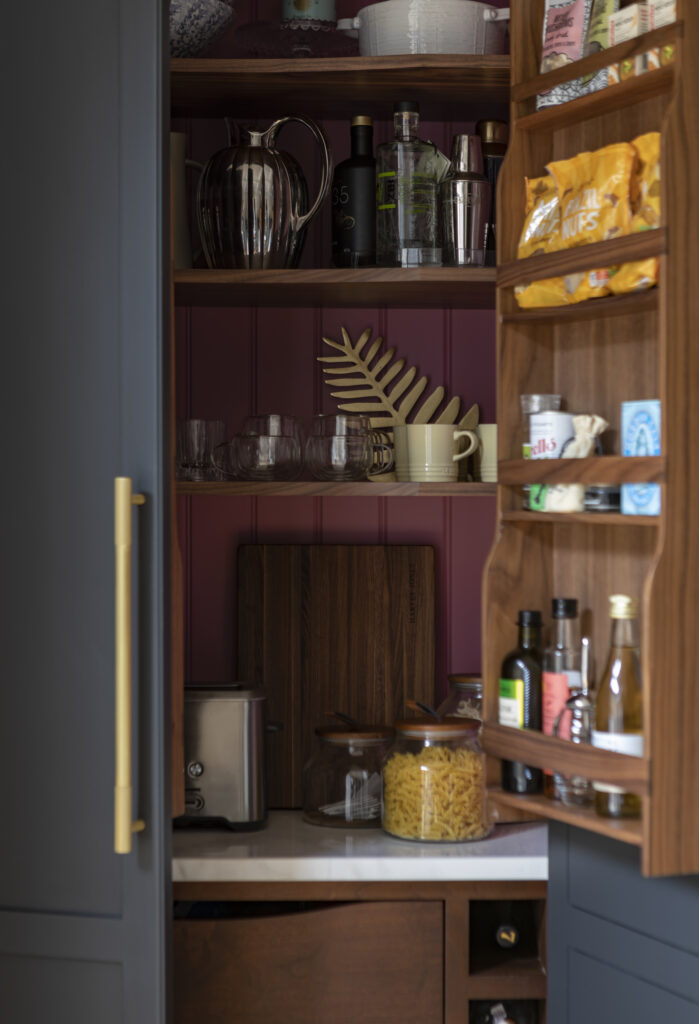
4. Label Shelves and Containers
There is a reason this method is still a firm favourite for organisation. Storing dry goods inside clear containers can allow for quick identification, as well as accommodating shelf life. Adding a small label to shelves can also help with fast recognition, making your kitchen more efficient.
These measures are especially useful in households where multiple people use the kitchen. They prevent items from becoming lost if placed incorrectly, maintaining order and structure. Alternatively, labels may only be used for a small time whilst you understand your new kitchen.
5. Add Lazy Susans for Corner Cabinets
Corner cupboards are notorious for becoming black holes of forgotten items. A Lazy Susan can solve this problem by allowing you to rotate and access items quickly and easily. This eliminates the prospect of items being left at the very back of the cupboard to go out of date or stay unused.
As part of our bespoke, tailored service, we can discuss with you how best to navigate these tricky corner spaces. From pull out mechanisms to curved cabinets, there are a range of options to choose from. Find out more: How to Use Corner Space in a Kitchen
6. Categorise by Type
In the same way that you can group items by purpose, you can also organise your kitchen cupboards by categorising by type. This means keeping physically similar items together—pans in one section, Tupperware in another, and so on. This avoids the frustration of rummaging through a mix of unrelated items.
Choose dedicated storage solutions that are tailored towards keeping specific items. Our clients often select a kitchen larder solution for this purpose, with shelving specifically designed to hold different types of items. Browse our options: Kitchen Larder Solutions

7. Integrated Bin Cupboards
Although practical, bins aren’t the most aesthetic of kitchen assets. Instead, integrated bin kitchen cupboards can keep waste and recycling out of sight. The added benefit is that these free up floor space, giving you more room to move seamlessly around the kitchen.
For added convenience, we would advise integrated bin cupboards to be placed near food preparation areas. As every kitchen is different, we can expertly help you in finding the best, most effective location. We can create sleek and practical options, designed to blend seamlessly with your kitchen layout. Find out more: Integrated Bin Cupboards
8. Incorporate Drawer Inserts
Drawer inserts are an ideal asset to help you organise your kitchen items. These can be integrated into the drawers, with custom dividers to ensure cutlery and utensils stay in perfect order. This prevents kitchen cupboards from becoming cluttered and messy, with everything having its own place.
Should you choose to incorporate drawer inserts into your kitchen, we can create a bespoke solution tailored to you. Choose from a variety of materials including rich oak and walnut to add the ideal finishing touch to your kitchen. Learn more: Drawer Inserts
9. Make Use of Vertical Space
Many kitchen cupboards have unused vertical space that goes to waste, especially taller cabinets. These can be optimised with solutions such as shelf risers, stackable containers, or under-shelf baskets. These additions are perfect for doubling storage in tall cupboards and keeping smaller items organised.
Our bespoke kitchens can include adjustable shelving systems to ensure every inch of your cupboard is utilised efficiently. There is also the option to select one of our beautiful dressers, using vertical space to store everything from display dishes to coffee stations. Find inspiration: Dressers
10. Install Pull-Out Shelves or Drawers
Deep cabinets can make it difficult to access items at the back. Pull-out shelves or drawers transform these spaces into easily accessible storage zones. These solutions are ideal for storing heavy pots and pans, or smaller cutlery.
Here at Harvey Jones, we can create unique run-end systems that combine functionality and elegance, making even the hardest-to-reach spots convenient to use. These are ideal for smaller kitchens, often found on the end of islands and upper cupboard runs. Find out more: Run-End Storage

Organise for Life with Harvey Jones
As this guide demonstrates, a well-organised kitchen starts with thoughtful planning and practical solutions tailored to your lifestyle. For more bespoke kitchen assets, view more of our functional storage options: Storage Options
Whether you’re reorganising existing cupboards or looking towards a new kitchen, Harvey Jones can provide expert advice to make the most of your space. Ready to elevate your kitchen storage? Book a free design consultation or request a brochure today.
